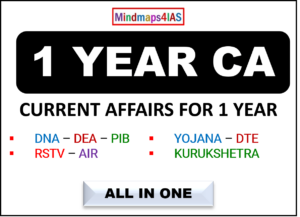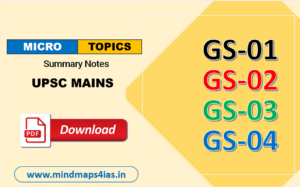Subject: Social Issues, Governance, Economy
Relevance: Understanding global gender indices is crucial for UPSC, as these benchmarks assess development across various parameters, providing insights into the progress made in creating a gender-equitable society. These statistics also provide value addition for Mains answers.
Why in the News?
-
International Women’s Day is celebrated annually on March 8.
-
Emphasis on Sustainable Development Goal 5 (SDG-5): gender equality and the empowerment of all women and girls.
Key Global Gender Indices
-
Global Gender Gap Index:
-
Published by: World Economic Forum (WEF).
-
Benchmarks: Current state and evolution of gender parity across four key dimensions:
-
Economic Participation and Opportunity
-
Educational Attainment
-
Health and Survival
-
Political Empowerment
-
-
Index Range: 0 (complete inequality) to 1 (complete parity).
-
Top Rank: Iceland (93.5%) – leading for over a decade. Followed by Finland and Norway.
-
India’s Rank:
-
129 out of 146 countries (2024).
-
127 out of 146 countries (2023).
-
Puts India at 18th position from the bottom.
-
-
-
Gender Inequality Index (GII):
-
Published by: United Nations Development Programme (UNDP) in their Human Development Report.
-
Measures: Gender inequalities in three key dimensions:
-
Reproductive Health
-
Empowerment
-
Labor Market
-
-
Score Range: 0 (women and men fare equally) to 1 (one gender fares as poorly as possible).
-
India’s Rank:
-
108 out of 193 countries with a score of 0.437 (2022).
-
122 out of 191 countries with a score of 0.490 (2021).
-
-
India’s GII value is better than the global (0.462) and South Asian (0.478) averages.
-
-
Gender Social Norms Index (GSNI):
-
Published by: UNDP.
-
Focus: Understanding the role of social beliefs in obstructing gender equality along four dimensions:
-
Political
-
Educational
-
Economic
-
Physical Integrity
-
-
Findings:
-
“Close to 9 out of 10 men and women hold fundamental biases against women.”
-
Nearly half believe men make better political leaders, and two of five believe men make better business executives.
-
-
Percentage of People with Bias in India: 99.22%.
-
-
Women’s Empowerment Index (WEI):
-
Developed by: UNDP and UN Women.
-
Measures: Level of women’s empowerment across five dimensions:
-
Health
-
Education
-
Inclusion
-
Decision-Making
-
Violence against Women
-
-
Score Interpretation: Values closer to 1 indicate higher empowerment.
-
India’s Score: 0.52.
-
-
Global Gender Parity Index (GGPI):
-
Developed by: UNDP and UN Women.
-
Assesses: Status of women’s achievements relative to men’s in four dimensions of human development:
-
Life and Good Health
-
Education, Skill-Building, and Knowledge
-
Labour and Financial Inclusion
-
Participation in Decision-Making
-
-
Score Interpretation:
-
Below 1: Women perform worse than men.
-
Above 1: Women perform better than men.
-
-
India’s Score: 0.560.
-
NITI Aayog SDG Index
-
Evaluates progress of states and UTs on various parameters including health, education, gender, economic growth, institutions, climate change, and environment.
-
SDG India Index scores range between 0–100 (higher the score, the greater the distance to target achieved).
-
Overall, India’s score improved from 36 in 2018 to 49 in 2023-24.
Beyond the Nugget: Gender Budget Statement (GBS)
-
Released by the Government of India along with the Union Budget since FY 2005-06.
-
Includes schemes across Union ministries and departments with full or part allocations for women and girls.
-
Reports a total allocation of Rs 4.49 lakh crore in FY 2025-26 (37% increase from FY 2024-25).
-
It is not a separate budget for women, but a reporting/accounting exercise.
















